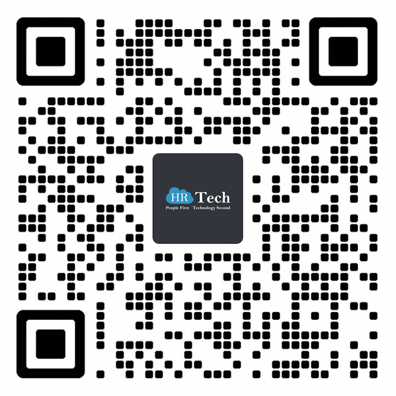-
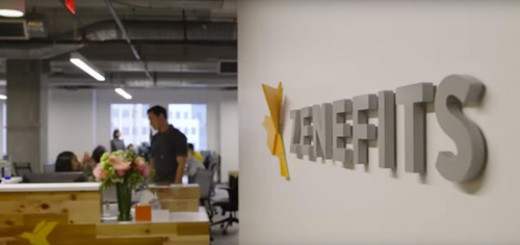 硅谷
硅谷
将 CEO 扫地出门之后,Zenefits 承认软件中含有欺诈性程序
将公司 CEO Parker Conrad 扫地出门之后,曾在 2015 年风光无两的独角兽公司Zenefits 如今要做得是继续整顿家门。在最近曝光的一封公司内部邮件中,Zenefits 的新任 CEO David Sacks 向公司员工坦陈,Zenefits 的软件中存在欺诈性软件程序,能够帮助未经授权的销售人员非法成为保险代理人并销售医疗保险。
这款程序在 Zenefits 中被命名为 “Macro”,它可以利用作弊程序帮助想要成为保险代理人的销售人员完成 52 小时的法律规定培训时长,用户通过这款程序可以直接跳过本该是强制完成的培训课程,直接进行证书的签发环节。
这样的欺诈性程序直接造成了 Zenefits 涉嫌伪证罪以及代理许可违法的罪名成立,根据华盛顿州的法律,这会被判 B 级重罪,违法者可能受到长达 10年 的监禁以及 2 万美元的罚款。目前,Zenefits 已经承认在美国加州推行了这一违法功能,后者是该公司在全美最大的市场。
不过,出现这样的结果也算是意料之中,去年 11 月,新闻聚合平台 BuzzFeed 就曝出 Zenefits 涉嫌允许未授权的代理人销售健康保险,这也引起了华盛顿州保险委员的注意并进行调查,这也连带引发了 Zenefits 前任 CEO Parker Conrad 的解雇事件。
“公司内部的各种流程、控制和法律风险的规避都在执行力上有些问题,甚至有些决定是错误的。” Zenefits 公司内部的一封公开信表示,Conrad 的离职因为合规管理意识的缺乏。
目前,Zenefits 表示将停止 Macro 程序的运行,相关部门的责任人也将被停职,公司也将继续配合相关部门的审查,可以说,Zenefits 想要挺过现在的这道坎儿,并不是一件容易的事儿。
原创文章,作者:苏建勋,如若转载,请注明出处:http://36kr.com/p/5043230.html
-
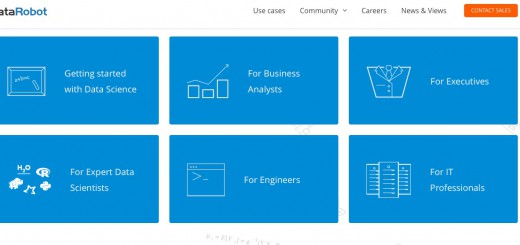 硅谷
硅谷
机器学习平台 DataRobot 获得 3300 万美金融资
总部位于波士顿的机器学习平台 DataRobot 今天宣布获得了由新企业协会领投的 3300 万美金的融资,其中跟投方为 Intel Capital 和 IA Ventures。
截止到目前,DataRobot 总共获得了 5700 万美金的投资。DataRobot 表示,该公司已经在亚洲、欧洲、美洲设立办事处,此轮融资将有助于扩大全球的业务开发和销售规模。
-
![]() 硅谷
硅谷
Linkedin 持续暴跌,收盘100.98刀,跌幅达8%
刚刚收盘的美股 Linkedin收盘价格为100.98 美元,市值132.4亿美金。
52周最高估价为276.18美元。
一个字,真惨!
-
![]() 硅谷
硅谷
Hired 融资 4000 万美元,收购 3 家公司开拓国际市场
Hired 是一个互联网人才竞拍服务网站,公司今天宣布刚获得一轮 4000 万美元的融资,此轮融资由 Lumia Capital 领投。到目前为止,Hired 的融资总额已达 7000 万美元。
Hired 创立于 2012年,公司总部位于旧金山,Hired 最初的产品名是 DeveloperAuction ,后来才改为 Hired。和传统的招聘模式不同,在 Hired 上,不是求职者主动向招聘公司投递求职简历,而是公司需要在一定时间内竞拍自己看中的求职者。正在招聘的公司能够看到很多求职者的简历,同时能看到其他公司给出的竞价,这样在求职者最终决定选择哪家公司之前,公司可以通过提高竞价的方式增加竞拍成功的可能性。Hired 上公司提供的薪水一般在 7.5 万美元-25 万美元之间。
如果企业希望在 Hired 上寻觅人才,他们必须在这个平台上 提供详细的职位描述和待遇水平,例如薪金、福利等 ,这样会有助于吸引候选人。举个例子说,假如你花费了数周的时间去一家公司面试,面试过后发现企业提供的薪资待遇达不到你的预期,你会做何感想?当企业在 Hired 上找到了合适的候选人之后,Hired.com 会收取佣金。 佣金金额为该候选人月工资的 1%,佣金按月收取(24 个月内)。如果候选人离职,Hired 会停止收取佣金,而成功找到工作的求职者也能获得 1000 美元的红包。 大多数其他类似平台,都是事先向企业收取候选人信息浏览费用,而 Hired 则是将所有候选人的信息免费公开,直到候选人入职之后才开始收取费用。
Hired 最初的服务范围仅限于美国。去年3月 份,公司开始拓展国际市场,并在英国设立了一个办事处。去年年 底,Hired 又在加拿大设立了一个办事处。目前 Hired 正在通过收购兼并的方式来加速国际市场的扩张步伐,目前已完成了三笔收购。
Hired 的第一项收购是 Jobbop。Jobbop 是一家位于墨尔本的招聘类创业公司。Jobbop 在澳大利亚提供的招聘服务的模式和 Hired 类似。而收购 Jobbop 也意味着 Hired 服务已经正式进入澳大利亚市场。此外,Hired 还收购了一家位于法国巴黎的创业公司 Breaz,后者提供的服务主要是为本地公司招聘科技和销售人才。Hired 还收购了一家位于美国加利福尼亚的创业公司 Zlemma。Zlemma 提供的服务主要利用 “语义搜索引擎” 的方式是帮助一些大公司(例如 Google、Amazon 和沃尔玛等)找到和自己发布空缺职位相匹配的求职者,从而改善公司的招聘现状。收购后,Hired 将 Zlemma 的技术直接整合进了自己的招聘系统中了。
今天除了发布融资消息外,Hired 今天还表示公司的服务范围已经拓展至新加坡。最开始的一段时间,Hired 主要瞄准的是互联网程序员的人才招聘市场,目前公司服务的人群范围进一步扩大了,除了互联网公司程序员外,Hired 现在提供的人才竞拍服务的对象还包括销售人员和自由职业者。公司今年还打算进一步扩大服务对象的范围。之所以这么做,也是为了进一步增加公司营收和流量,从而更好地吸引投资者。
目前的招聘市场可谓是非常火,就在上个月,一家名为 Job Today 的欧洲初创公司获得了 Accel 领投 // 菲利克斯以及红树林资本跟投的 1000 万美元 A 轮融资,它提供的面向 B 端的极速招聘功能,主要瞄准的是欧美蓝领招聘市场。而就在上个星期,校园职业社交平台 Handshake 刚获得 1050 万美元的 A 轮融资,主要想让小白们更清楚自己该入哪行。
在中国也有和 Hired 招聘模式类似的创业公司,包括 100offer、JobDeer、yesoffer、实力拍等。其中 JobDeer 由于融资出现了问题,公司已于去年年 底停止了运营。推荐阅读《聊聊 JobDeer 从无到有,再到停止运营的那些事》。100offer 去年刚获得一轮 2000 万人民币的融资,目前每周一次新的拍卖,持续时间为 2 周,每个月拍卖 400-800 位程序员。在 2 周时间里 HR 都可以给正在拍卖的程序员发送邀请。每期拍卖时间定在周一。拍卖模式的流程是这样:程序员将自己的简历、Github 账号、社交网络账号等提交给 100offer,经过 100offer 审核之后,100offer 将会对程序员进行包装,比如一句话的个人简介等,通过审核的程序员将进入拍卖程序。
本文参考了多个信息来源:venturebeat.com,如若转载,请注明出处:http://36kr.com/p/5043178.html
-
![]() 硅谷
硅谷
Zenefits 创始人兼CEO 出局,COO接替新CEO ,超高融资酿下苦果
Parker Conrad,作为2015 增长最快的独角兽之一的 Zenefits 创始人兼 CEO,正式从公司出局。
在 Parker 的掌舵下,Zenefits 的财政收入没能达到预期目标,而且正在接受美国监管部门的调查,可以说有点被公司扫地出门的感觉。接任的 CEO David Sacks 在向员工解释原 CEO 离职的内部邮件中表示,Conrad 是因为合规管理意识的缺乏而出局。
''实际情况是,公司内部的各种流程、控制和法律风险的规避都在执行力上有些问题,甚至有些决定是错误的。''
Zenefits 主要的产品是 HR 相关的各种云服务,大多数都是免费的,其主要收入的来源是面向其客户的保险业务。这就是问题的关键所在,他们让未经授权的销售人员非法成为保险代理人,销售医疗保险,这一举动就引来了监管机构的调查。
随之而来的便是 Zenefits 在 2015年 未能达到自己定下的 1 亿美金的营收,这个消息也是 Conrad 确认的。而 1 亿美金这个数字也是 Zenefits 在之前能够收到资本青睐的主要原因之一,上一轮他们获得了 5 亿美金的融资,估值达到 45 亿美金。
但在其营收没能达到预期的情况下,Zenefitsd 投资者之一的 Fidelity 在去年9月 对这家公司的估值仅为拿到融资时的一半。
''拿到授权''是新 CEO David Sacks 在内部邮件中提到的关键词之一,他强调之前的公司文化已经不太适应现在这家受到高度监管的公司了。这封内部邮件非常的直接的在职责 Conrad 的各种行为。
在成为公司 CEO 前,David 是 Zenefits 的 COO,同时也是一位投资人,经它手最明星的项目毫无疑问是 Paypal,这次公司高层的变动也让更多的投资人进入了董事会,包括鼎鼎有名的 Peter Thiel(Paypal 合伙人)。
原创文章,作者:Mihawk,如若转载,请注明出处:http://36kr.com/p/5043184.html
-
 硅谷
硅谷
500 Miles:用大数据,帮你找到最合适的职业
来源:猎云网 (编译:马小白)
对于很多年轻的工作人士来说,在合适的公司找到一份适合自己的工作也许不是件容易事。他们可能在接受了工作之后才发现这份工作并不适合自己,或者他们无法在这片领域做出巨大成就。这种情况的出现主要是因为求职者没有获得全面有效的信息。
一家叫做500 Miles的创业公司开发了一种数据驱动平台,声称可以将你直接匹配到公司空缺的职务上,在这里你可以变得大受欢迎。
如今,这家公司已经推出了自己的在iOS和Android手机客户端的应用。
由Viral Kadakia和Murali Sangubhatla一起创办的500 Miles起初听起来和美国巨兽公司(Monster.com)或者其他的传统的求职平台很相似,但他们之间特别是在对数据的利用上还是有一些不同之处的。500 Miles从你的个人简介中获取有用信息,比如你期望的职位类别,工作许可状态,偏爱的工作地点,念过的学校,和过去的雇主……然后给你最人性化的职位推荐。你可以用注册的用户名和密码登陆,也可以通过Facebook登录,但不能通过LinkedIn登录。
除了提供与你要求相符合的职位外,500 Miles还针对你感兴趣的公司提供一种“公正评价”式的服务。通过这项功能你所获得的数据不只是一些来自Glassdoor,Kadakia和VentureBeat这些职业点评网站上就能搜到的传闻。相反,该功能通过收集网页上的各种各样的可利用的资源来编制一家公司的简介。
这样你不仅会对这家公司有更好的认知,而且还可以了解到你和这家公司之间千丝万缕的联系,比如你的前同事或者你的校友在那里工作。
除了这些对公司的独特见解和个性化的推荐方案外,500 Miles还有一个特点是具备搜索功能,可以让你搜索公司名称,特定地点等等。不仅如此,该功能还设有堆栈应用,所谓堆栈是指基于某一些相似属性而将一系列的公司组合到一起,比如“在金融科技领域快速发展的公司”,“女性雇员数量最多的科技公司”。
Kadakia将500 Miles描述成“一套从发现到评估全承包的解决方案。”
一旦发现了你喜欢的职位,你可以直接和公司接触或者通过500 Miles的手机应用与公司取得联系,只要这些公司在500 Miles设置了招聘职位。考虑到实际需要,500 Miles的这套申请系统可以让申请者为简历直接拍摄照片并立即上传。Kadakia说这项服务可以为用户提供实时更新,你会知道面试官何时打开你的简历、何时在阅读它以及最后是否被录用。求职者自己也可以浏览自己之前的职位申请。
目前为止已经有超过1000家公司使用了这套系统中的评价功能,和7家签约的合作伙伴,他们利用500 Miles这个平台发布招聘职位并接受求职者申请。Kadakia说,实际上签约的雇主是“成群结队,”像Zenefits、Ignite这样的公司或者其他的参与者们都渴望能提升自己的品牌效应并招揽顶尖的人才。而通过为500 Miles提供支持,雇佣公司们可以提前获得任何关于自己的负面评价,同时对系统积极的评价进行支持。
表面上看来,500 Miles势头强劲,但是在如今的市场上,它很有可能遭到来自LinkedIn,Hired或者其他职位搜索引擎的竞争,他们当中的很多也可以为用户个性化的职位推荐。
在2015年7月首次推出测试版后,现在已经有超过1000位来自美国各个州的用户希望通过500 Miles找到工作。
正如Kadakia自己描述的那样,他的用户们“寻找的企业不用大,只要能与公司一同成长并且不断学习把自己变到最好。”
Source:VB
-
 硅谷
硅谷
远程工作者的福音:这五个平台让你的远程工作效率更上一层楼
来源:猎云网(编译:福尔摩望)
最近这几年,远程工作逐渐成为人们感兴趣的话题。越来越多的公司开始给员工提供兼职或全职远程工作的选择,而有些公司已经摆脱了传统的实体办公室的限制。同样,自由职业者的数目也在不断增加。
在美国,大约有34%的工作人口属于这个范围。而随着类似Upwork、99designs以及Freelancer这样的平台涌现,远程工作正逐渐在世界范围内普及开来。
如果你是一个远程工作者,或者有部分时间不在办公室工作,那么接下来的几个工具将会帮助你找到工作、发现最适合远程工作者居住的城市,并从远程工作前辈那里获得经验。
Nomad List
寻找最适合生活和远程工作的城市。
如果你想找到世界上最适合远程工作的城市,那么你应该来看看Normad List。Normad List最初只是一个众包的电子表格,逐渐发展成了一个汇集5万多数据点的网站,数据点包含全球500多座城市。
你可以基于生活成本、天气甚至网速等来寻找心仪的城市。你也可以基于有趣、干净、安全、友好、多样性等特点来筛选。在每一个城市页面上,你都可以找到其他“流浪者”,你可以向他们咨询那座城市的生活感受,你也可以了解到最适合工作和休息的地方。
Nomads List最酷的地方是它的NomadScore排名,它会根据天气、湿度、网速、汇率等每天不断更新,所以它非常适合旅行时使用。想成为一名正式会员,你需要交纳一定的费用。之后你可以与其他成员交流。如果你经常在不同的城市之间辗转,这个伟大的社区一定不会让你失望!
Remote OK
汇集日常所有远程工作的集合器。
这个网站汇集了你所有想做的工作。对于远程工作爱好者来说,这个日常集合器简直就是量身定做的。简单来说,Remote OK是一个搜索引擎,它将存在在网络上的所有远程工作信息都汇集起来。整体交互界面非常整洁美观,你可以根据工作类型和薪酬进行搜索。
不管你的收件箱是否堆满了邮件,你都应该订阅Remote OK的每周工作文摘。如果你打算在不久的将来寻找一份远程工作,这将是一个很好的资源。
告诉你一个有趣的事实:这个工具的开发者和Nomad List是同一人——Pieter Levels。
Remote Year
花一整年时间边旅行边远程工作。
Remote Year是2015年新推出的项目,汇集了全球75名专业人员,这些人在这一年里边工作边全球旅行。如果你有幸成为其中一员,你将会在一年的时间内探索12座城市,每座城市居住一个月。这将会给你一个机会去了解当地的社区和文化,就像是为成年人准备的游学。
这个项目一年需花费2.7万美元,虽然没有具体说明包含哪些费用,但依旧很吸引人。首付5000美元,然后每月2000美元。作为交换,该项目会提供所有的旅行费用、单独的房间、可靠且24小时连接网络的工作地点,以及各种各样的团队活动和会议。
在项目开始时,你需要找到自己的工作,Remote Year并不提供工作。但是如果你没有的话,你可以去Remote OK上试试。
Workfrom
发现他人远程工作的地点。
你是否曾经到达一个城市后却找不到最适合远程工作的地方呢?虽然看上去你可以去任何地方,但是你却需要花费数几个小时找到有可靠网络并安静的地点。
那就来试试Workfrom吧!它类似于Yelp,只不过是面向自由职业者和远程工作者罢了。使用Workfrom可以找到最好的酒吧、咖啡店、商务地点或者其他适合工作的地点。你可以通过电源、可靠WiFi、关门时间、食物、安静、就近等其他条件来进行筛选。
特别提醒:你可以选择“clock in”来看看还有谁在附近工作,能够碰到其他同道中人,和他喝杯咖啡交个朋友是很惬意的事。
Pajamas.io
远程工作者的访谈集合。
Pajamas.jo汇集了许多正在远程工作的人员访谈。人们所从事的工作日新月异,而对是否需要在办公室办公不再是一个强制要求。当然,基于地点无关的工作也有其自身的挑战,比如说建立一个强大的企业文化、进行协同工作、管理多时区以及保持所有人在商业战略和目标上的一致等等。
这些访谈内容来自于那些远程工作处理较好的工作者。如果你要就远程工作寻求建议或者就如何管理远程工作团队寻求新视角,那么这些对话非常值得看一下,你一定会在这个网站上找到一些启发性的东西。
Source:Medium
-
 硅谷
硅谷
硅谷的特权与不公:为什么成功的创业者很少来自寒门?
编者按:本文作者 Ricky Yean 是社交网站推广平台 Crowdbooster.com 的联合创始人兼 CEO。他和他的团队正在筹备建设一个名为 PRX 的公关服务平台。
我和我的联合创始人 David 都出身贫寒,我们的人生和创业历程都可谓历尽艰难。因此,在硅谷一听到别人讨论收入不平等,我和 David 就会格外留意。有一段时间,我们的世界都被各种讨论的声音所冲击。 Paul Graham 说过这么一段话:
社会流动性的缺失与贫穷紧密相关,我自己就是一个很好的例子。不是说创业成功需要你出生于一个富裕或者中产的环境中,但是非常成功的创业者真的很少是来自寒门。
Graham 是对的,作为创业者,我们尤其注意到了这一点。不仅仅是因为我们创业过程中比起其他人缺少了多少机会,更是因为对于出身赤贫的人而言,创立并支撑一家 “企图快速发展” 的公司是非常艰难的。自 2010年 投身创业以来,David 和我一直针对这一观点进行争辩,我们的付出也有所收获。我和 David 称主要原因是 “观念不平等”。要想真正地理解这个词,你需要站在我的角度上,下面让我带你进入这段一个人的旅行。
我是怎么走到这个位置的
我 11 岁的时候,与我的父亲来到了美国。我们在台湾几近破产。我学会了英语,而我的父亲则没有。我的父亲也不工作,所以我 14 岁的时候就开始打各种奇奇怪怪的零工。跟所有的移民后代一样,我会为房东做翻译、帮他们处理账单、政府服务、保险之类等业务。我还算聪明,但是我在学校的成绩并不好,尤其是在英语勉强够用的情况下。到了高中,我的标准测试成绩很差,当我打算好好表现的时候,辅导员都极力阻止我修荣誉课程。第二天,我不得不把父亲领去办公室,并让他跟辅导员随便说上几句普通话,就是为了我能够修一门英语荣誉课程。
我记得我那门课的成绩是 B——至少我下一年有资格修 AP 课程了。与我很多斯坦福的同学不同,上高中对于我而言真的不是儿戏。那时我觉得自己准备不够充分,也不知道该从何入手学习。我每天只睡三个小时,剩下的时间都用来念书。每一篇文章我都会反复阅读三遍,这样才能勉强记住。我每天都顶着一双布满血丝的双眼去上学。有一段时间,我甚至因为压力太大导致头顶脱发,这让我相当尴尬,我也因此学会了自嘲和幽默。
高一时才知道 SAT,第一次模考的成绩只有 900(满分 1600),我开始慌了。拿着自己挣来补贴家用的钱,我去隔壁 Elite Education Prep 交了几节 SAT 课程费。到了续费的时候,我告诉他们我付不起了,好心的 Elite 员工决定让我免费上课,并给我提供了所有的学习材料。我最后考了一个非常好的成绩——足够让他们把我放到了光荣榜上以吸引更多的学生。
我非常幸运地拿到了斯坦福大学的全额奖学金。我心存敬畏地度过了大学第一年,有那么多优秀的人可以交流,有那么多触手可得的好资源。斯坦福成功地将我置身于物质和金钱的泡沫中——人生中第一次,我不需要过多考虑钱的事。这种隐形的力量是惊人的,我认为自己和别的同学没有什么不同,我觉得自己必然有所成就。是的,我需要再强调一遍,我坚信自己必然是能成大事的。
当然,那不过是一种幻象。
泡沫被迅速戳破。我在大一上半学期选修了一门 “当代非洲政治” 课,即便老师给分颇为慷慨,我还是只拿到了 C+。我不知道如何在一个仅有 12 名学生、以讨论为基础的课程中发言。我十分害怕,一直缄默不语。我不知道该如何阅读或略读发给我们的材料,所以第四周的时候,我还在傻傻地阅读第一周的材料。我不知道如何对材料进行批判性思考。曾经有一次,Weinstein 教授把我叫到办公室,询问我有什么困难、需不需要他的帮助。那时,我甚至都不知道该怎么向他说明问题。在宿舍,我总是不断的受到室友的鼓舞。我发现他们每个人都会演奏乐器,这让我感到格格不入。比起努力弥补这些差距,我只是调查宿舍楼里还有谁和我一样,确认自己并不是唯一一个不会玩乐器的学生。是的,那时的我就是一个不太合群的穷孩子。
大二时,一切都幻灭了。与很多同学一样,我不知道自己想做什么,所以我决定和他们一样,什么事都参与。在课程难度越来越大时,我加入了一堆俱乐部,很快便陷入了一片混沌之中。当你身处混沌的时候,你会很不理智的寻找更多方法证明自己的无能。我和室友们去上同样的课,但是他们学习起来比我快很多,而我一直在勉强和挣扎。随后我请他们中的一个人帮忙辅导,即便这样也没能跟上。不仅如此,我所有的课外活动也快将我淹没,因此我逃避了很多俱乐部的任务。为了弥补因此带来的社交活动空缺,我只能花钱和室友们一起去看电影和滑雪——以买教材的钱为代价。我还记得那时候我不得不向最好的朋友借了几百块来还债,同时我还申请了贷款。我记得我跑到学生贷款办公室哭诉。我告诉办公室的老师我急需这笔钱,我不希望因为缺钱而毁掉我们的友情,就像之前毁掉了很多其他东西那样。在等待贷款的 2 天里,我既狂躁又绝望,一直紧盯着余额页面直到钱到账。这位借我钱的同学至今仍是我的挚友之一。
钱的问题一直困扰着我的大学时光。父亲经常打电话来要钱,而我能做的就是做家教、拿到勉强够用的补贴。我记得在电话上我冲着父亲破口大骂,我不想被他拖累,我想和其他同学一样享受大学生活。我不想低人一等,我一直努力维持着自己与同学背景相似的幻象。我选择相信世界上没有什么能阻止我的成功,我可以挺过这一切。
我的确做到了。
在两位校友 Kimber Lockhart 和 Andi Kleissner 的带领下,我参观了一些湾区的社会企业,比如贷款平台 Kiva 和 World of Good。Kimber 和 Andi 建议我加入一个名为 BASES 的斯坦福学生社团——这里集结了许多有意创业的年轻人。这一决定让我重获新生。在 Jeff Bezos 宣布亚马逊 AWS 云服务上线的同年,我入读 Y Combinator 的一所创业学院。经过这一经历,我终于找到了适合自己做的事,并有幸担任 BASES 和 AKPsi 的联合主席,AKPsi 是一个男女同校的、专业的商业联谊会。随后我进入 Alsop Louie Partners 做风投,公司的创始人 Stewart Alsop 送给我人生中第一台苹果设备——他的旧 Macbook。接着我进入 Eventbrite 做实习,他们的 Project CEOP 在我身上看到了我自己都没有意识到的特质和潜力。我还开始和一位非常棒的大牛一起做些副项目,而那个人就是我的联合创始人 David Tran。那时,我成了校园里提到创业家气质同学们第一个想到的人。我不断提高自己的执行力,我学会了如何领导一个团队。我们做的项目得到了 Y Combinator 的资助,于是我们筹集资金,建立了社交网络推广优化平台 Crowdbooster。我们现在正在筹备一个更令人激动的项目 PRX,应需提供公关服务。现在一切进展顺利,我在下一篇文章中会给出更详细的信息。
观念不平等
讲完了我的故事,我现在来向各位解释什么叫 “观念不平等” 以及为什么 “很少有成功的创业者来自寒门”。
我非常幸运,因为我发现了自己对于创业的热忱,创业使我曾经因为学业而失去的精力再次汇聚。我十分幸运,因为我发现自己善于与人打交道,且有很好的组织能力、领导能力。我很幸运,因为没有发生更多坏事,否则我可能一蹶不振。我本可以在现实面前屈服、辍学、放弃自己的幻想去追求一个更容易达成的目标,可我还是选择了创业。于我而言,创业就好像我的最终声明,告诉自己我希望把梦做下去、我相信自己能够有所成就。
无论是在斯坦福求学还是在创业的时候,我都为了自己的幻想拼尽全力。我知道理想与现实的差距,世界本来就不是一个公平的竞技场。自身和经历致使我常常感知到脑中有干扰的声音,它们说我的创业会以失败告终。我固有的观念中有一些部分在阻碍我前进,我也一直在努力与这些干扰因素对抗。
一个穷人的固有思维便是尽量少生事端,因为搞砸事情会造成经济损失,而且机会来之不易。所以很多时候,我不太敢于说出自己的想法并极力维护它们。我知道有很多人进餐时会和父母进行有深度的对话,而我从来没有这种机会,因为在我和父亲居住的卧室过于狭小,根本摆不下餐桌。想象一下这会如何影响你 Pitch(融资路演)时的表现。那种陈词激昂、满腔热情地与百般刁难的投资人斗智斗勇的场景,于我而言实在是太过陌生。
因此,出身贫寒的创业者往往缺乏自信。我从未上过大学的母亲以前常常对我说 “我们没有富贵的命,所以你现在已经不错了”,这种观念一直困扰着我。相比之下,那些更优秀的父母可能会对孩子说 “相信自己,你就一定行”。这些孩子生来就相信自己能够改变世界,而这种自信也会体现在他们的 Pitch 中。自信这种东西,一定是长年累月培养出来的,没有办法偶得。
此外便是资源管理上的短板。贫穷使人坚信金钱就是资源。我小的时候,时间永远比金钱廉价,所以我宁愿花更多的时间也不愿意付出金钱。我们进行天使轮融资的时候,我不得不解决这个问题,但是却花费了很长时间。比如说,在一个简单的人员雇佣决定上就要花费很长时间,影响到了公司的成长。此外,还有人力资源管理,就是管理那些能帮到你的人脉关系。穷人家的孩子往往没有能为你指点迷津的父母或者亲戚。我不得不学会察言观色,学会跟成功人士交谈,尝试向成功人士取经,并努力让自己也变得更像他们。
我还注意到了固有资源的重要性。我没有朋友和家庭资金的支持。事实上,我每月还要从自己的收入中抽出一部分寄给我的父亲。而那些有朋友或家庭资金支持的创业者在公司成长阶段往往更如鱼得水,也更有勇气面对失败。一般而言,与我背景相似的人都会在金融或 IT 业工作了好些年、有了足够负担家庭的资本累积之后,才会投身创业。
还有一点,就是内心中愧疚感对你的阻碍。如果你来自和我一样的家庭、同样拿着斯坦福的毕业证,你大概也是全家人最重要的经济支柱。你很可能会选择更安稳、收入可观的工作以支持你的家庭。创业从某种程度上来说,是一种不太负责任的行为。而且即便你克服了所有干扰的声音,并完全改变自己的观念,你也会受到和你一起长大的人的指指点点。人们会说你忘记了自己的身份,就好像所有著名的说唱音乐人都被指控 “背叛了曾经的朋友”。
以上这些都造成了我们这些出身贫寒的创业者需要克服的观念不平等。我们认为这就是为什么这类创业者往往很难成功的原因。很幸运的是,这些都成为了我们进击的筹码。我们认清了这些干扰因素。我们克服了那么多困难,并坚信我们会一直战斗直至成功。我们希望更多的人也能认清这一点,因为他们往往关注有形的不平等——那些可以量化或者看得见的东西,比如金钱或者资源。但是那些可能真正阻碍你突破的,是你内心中的不平等——一种暗中滋生、难以名状的怪物。
David 和我都是我们能够真正改善生活、提高自己和改变穷人思维的案例,我们也希望能够帮助更多的人改变观念模式。我将会继续分享我的故事和心得,希望各位保持关注。
注:本文译者 Alksy。
本文编译自:medium.com,如若转载,请注明出处:http://36kr.com/p/5042844.html
-
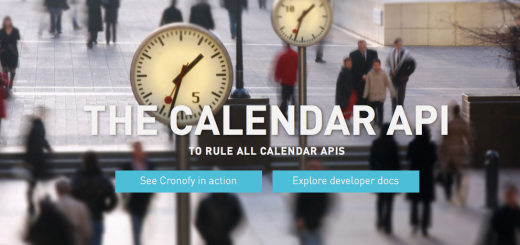 硅谷
硅谷
为企业提供日历 API 合并,Cronofy 获得种子轮 160 万美元融资
英国一家专注于日历 API 开发的技术公司 Cronofy 近期宣布,获得由 Firestartr 和 henQ 共同投资的种子轮融资,金额为 160 万美元。
不过和一般专注于 C 端的时间管理工具不同,Cronofy 提供的是面向 B 端的企业级 SaaS 服务,公司可以通过 Cronofy 公司提供的 API 调用工具,将消费者的日历与自家软件产品的时间信息进行匹配。
目前廉价机票供应商 Skycanner 已与 Cronofy 进行合作,将乘客的个人日历与预订的航班信息打通后,就可以让 C 端更方便的收到航班提醒以及查询航班改动等相关信息。
另外,不少公司还将 Cronofy 的服务用于企业系统的招聘环节,HR 可以将求职者的日历与企业面试安排日程相关联,一旦求职者需要变更面试时间,HR 会在第一时间得知并重新编辑日程表,这对于双方来说都能获得沟通效率上的提升。
对于 Cronofy 公司来说,日历 API 开发的难点在于跨平台数据的同步问题,公司也将把新一轮融资放在云平台的建设与完善上;而在功能开发方面,Cronofy 想为企业打造 “时间共享” 的概念,当企业有兼职、零工的发布需求时,可以直接放在 C 端的日历上以招揽合适的人选。
来源:36氪,作者:苏建勋,如若转载,请注明出处:http://36kr.com/p/5042924.html
-
 硅谷
硅谷
24小时内为雇主找到合适求职者,Job Today获1000万美元A轮投资
来源:猎云网 (编译:堆堆)
新兴欧洲招聘初创公司Job Today已经成功获得1000万美元投资(875万欧元)。这笔资金将用来扩张全球市场,搭建求职者与雇主快速连接的桥梁。
Job Today这款应用在安卓和iOS平台上均可下载。应用的受众对象是零售、酒店以及服务行业的小企业。公司的目标是靠移动手机平台来简化求职者与雇主之间的配对过程,以此来“变革”招聘流程。
招聘人员以及求职者下载的是同一款应用,但被分到两个不同的功能区:在一个功能区内,雇主可以看到可供他们选择的员工;而在另一个功能区内,求职者可以看到本区域内的空缺职位。求职者可以在几分钟之内创建一个文档,然后简单点击完成求职申请。应用里还有一个内置的信息功能,可以方便雇主与求职者之间进行实时交流。
初创公司HotelTonight能够帮助旅客在最后关键时刻订到宾馆。而Job Today则有异曲同工之妙,致力于帮助求职者找到工作。雇主能够快速贴出空缺职位、查看有多少求职者对此感兴趣并且创建出求职候选人的名单。24小时内Job Today就能为雇主找到适合的求职者,这一点也使得该平台不同于其他招聘渠道,例如CareerBuilder、Monster.com以及Craigslist。
Job Today创办于西欧一个小型内陆城市卢森堡。去年五月Job Today在西班牙推出,但服务区域只限马德里和巴塞罗两个城市。去年十月,服务范围扩大至伦敦。几个星期之后,巴黎也囊括在服务范围之内。
公司表示自推出开始的八个月内,已经有2万名雇主注册该平台,其中包括著名的欧洲品牌Ann Summers以及Reiss。应用下载量已经达到200万次,有1万名用户成功找到了工作。
Job Today的联合创始人兼首席运营官Polina Montano在采访中确认,美国以及全球大部分城市都属于公司今后的业务开拓市场。
“我们计划于2016年在美国推出Job Today。”她在采访中这样说道,“我们的目标是提供一个适用于全球的招聘解决方案来改善如今已经支离破碎的招聘行业——该行业的市场价值为4000亿美元,其中低技能就业人员占据了2600亿美元的市场份额。全球有近2亿名失业人士,我们相信Job Today能够帮助他们找到工作。”
这轮价值1000万美元的A轮融资由Accel领投,Felix Capital以及Mangrove Capital Partners参投。 几个月前,公司从Mangrove Capital那里筹集到了150万欧元的种子轮融资——这笔资金已包括在今天宣布的A轮融资金额内。
“我们想要通过帮助全球数百万人找到工作来改善他们的生活。” Montano补充说道,“中小型企业以及服务行业是两个就业服务尚不完善的市场。通过将这两个市场的招聘流程变得快速而简单,我们在八个月内成功帮助数千人找到了工作。对于扩张业务市场以及实现公司目标来说,最初的市场牵引力、融资还有新市场的投放都至关重要。”
显然,Job Today提供的招聘平台极具吸引力。它可以尽快将求职者以及需要职员的雇主匹配在一起,此外该应用只能在移动手机上使用的现实恰恰暗示了未来社会发展的走向。
Facebook表示它有近一半的用户都只选择通过移动手机来使用其服务。如今,Job Today这类新兴初创公司关于应用平台的选择更是进一步证实了一点:大众开始远离传统计算机。
Source:VB
 扫一扫 加微信
hrtechchina
扫一扫 加微信
hrtechchina
 硅谷
硅谷
 硅谷
硅谷
 硅谷
硅谷
 硅谷
硅谷
 硅谷
硅谷
 硅谷
硅谷
 硅谷
硅谷
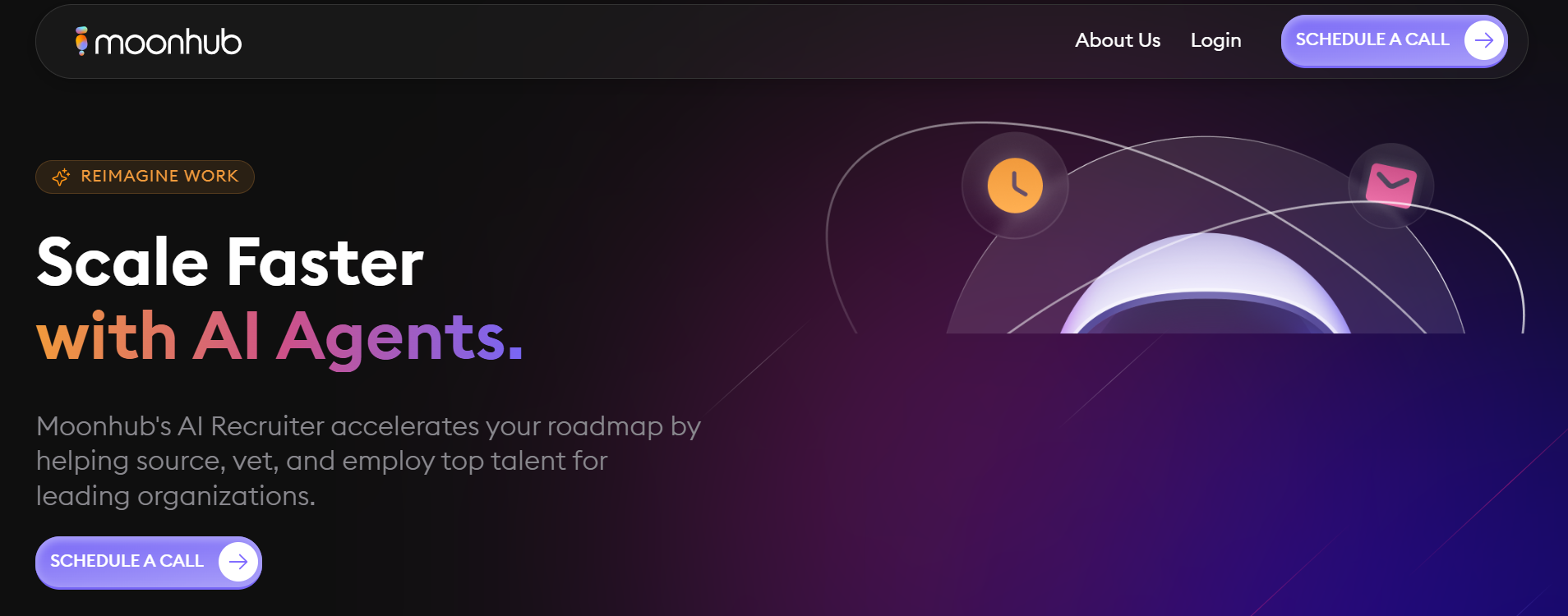




 扫一扫 加微信
hrtechchina
扫一扫 加微信
hrtechchina

